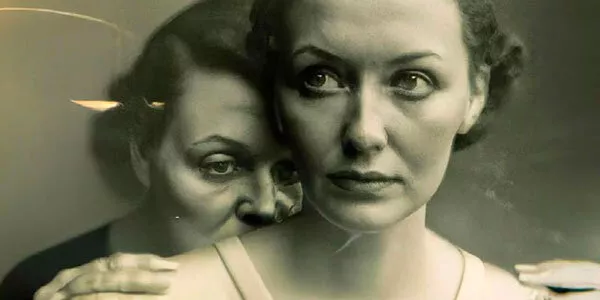
Art Markets & Techniques — Prints
What in the (art) world are prints? What are the origins and history of their artistic process, printmaking? What is the appeal for collectors, and what are the characteristics of the print market today? To answer these and other questions, our Head of Art Wealth Banking, Laurent Issaurat, met with Frédérique Darricarrère-Delmas who is the Director of the Prints & Multiples Department at Christie’s, Paris.

Frédérique Darricarrère-Delmas
Director of the Prints & Multiples Department at Christie’s, Paris.
Laurent Issaurat: How would you define a print, and how did the process of printmaking first make its mark in the history of arts and crafts?
Frédérique Darricarrère-Delmas: A print is a printed artwork. It is one of multiple impressions of an artwork, irrespective of the printing technique used. The “printed artwork” dates back to China in the second century AD, and to Japan from the seventh century AD. The first techniques involved carving out designs on woodblocks to which paint or ink was applied before being pressed onto paper or fabric — not unlike stamping.
Prints emerged later in the west, at around 14th century AD. The technique was initially used to replace painting and drawing, often for creating repeating patterns on textiles. The technique was later extended to other media such as vellum and paper, with the emergence of the first paper mills in Europe around this time. Very few examples of these early prints by anonymous craftsmen remain. The first engravings seem to be images used for private worship, such as the Man of Sorrows, the Virgin or Saint. They are depicted in relatively simple outlines and intended to be coloured by hand. The advent of the printing press in Europe (1450) greatly accelerated the development of prints. Today, there are many kinds of prints, their techniques having been adopted and perfected over the centuries up to present day. The four best-known techniques are etching, lithograph, screenprint and wood engraving. Important to note is that a print is not the copy of an original, but an original creation by an artist. In the Modern era, it is the result of close collaboration between the artist and the print studio: highly-qualified technicians — often artists in their own right — who work with the artist to create an edition.

Auguste Renoir
© Steve Ward/ © Christie’s Ltd. 2024
Laurent Issaurat: Tell us about the segments of the print market and how big it is today. What prices can we expect?
Frédérique Darricarrère-Delmas: The print market is part of the broader trend that distinguishes between the ‘Old Masters’ — from the origins of printmaking to Francisco de Goya (1746-1828) — and the ‘Modern and Contemporary’ artists — from the 19th century to present day.
For the three leading international auction houses, the global print market represented combined sales of around USD 170 million in 2023, of which Christie's accounted for just over 45% (USD 80 million). As some our most recent auction sales show, the price of prints vary significantly: Pierre-Auguste Renoir's 1898 lithograph in colours Chapeau épinglé (‘Pinning the Hat’) from an edition of two hundred copies sold for GBP 32,000; Henri de Toulouse Lautrec's 1897 lithograph La Partie de Campagne (‘Country Outing’), fetched GBP 24,000; Marc Chagall's Trois Anges (‘Three Angels’), signed in pencil and annotated (artist's proof), went for GBP 2,400; Francis Bacon's 1977 lithograph in colours Autoportrait (‘Self Portrait’), signed and numbered 167/180, fetched GBP 6,000; and Pablo Picasso's Minotaure aveugle guidé par une fillette dans la nuit (‘ Blind Minotaur led by a little Girl in the Night’), signed plate, from the Suite Vollard — an edition of fifty impressions on paper with large margins — boasted a hammer price of GBP 100,000.
Laurent Issaurat: How do prints form part of a collection?
Frédérique Darricarrère-Delmas: One of the greatest selling points of prints is the opportunity to own an authentic, iconic work for less than seven figures, as the examples above show. They are an excellent way of starting a collection because you can familiarise yourself with different styles and artists without breaking the bank. Prints can also add to an existing collection by incorporating themes and compositions found in paintings or sculptures, but in a different medium. Prints by Picasso and Jasper Johns show the evolution of the artists’ subjects and skills as printmakers over the course of their careers. Picasso invented entirely new printing methods; Warhol pushed the printers he worked with throughout his career; and Johns continues to create new and exciting prints well into his 80s.
Laurent Issaurat: What is the best way to go about choosing/buying a print?
Frédérique Darricarrère-Delmas: A big part of our speciality is to ensure the authenticity of artworks, and there are very few, if any, certificates of authenticity issued by experts or rightful owners. Prints put up for auction are catalogued by specialists or experts. Their appraisals are based on their knowledge of artists, techniques, paper and the market. They compare proofs (works) with other similar pieces held by museums or libraries and referenced in catalogues raisonnés . As a rule, it is advisable to contact an international auction house or a recognised specialist gallery when acquiring a print. These professionals will be able to certify the basic information used to determine the value of a print: its authenticity, the paper, signature (for modern and contemporary prints), its condition of the print, the artist's popularity and the current market, and the price of the desired print.
FIND OUR OTHER ARTICLES:
DISCLAIMER :
This document has no contractual value. It is not intended to provide an investment service such as investment advice, a related investment service, arbitration advice or legal, accounting or tax advice from Société Générale Private Banking France (‘SGPB France’), which cannot therefore be held liable for any decision taken by an investor solely on the basis of its content. SGPB France undertakes neither to update nor to modify it.
Before making any investment decision, please review the details of the documentation for the service or product being considered, including any associated risks, and consult your legal and tax advice. If the document is consulted by a French tax non-resident, he or she will have to ensure with his or her legal and tax advisors that he or she complies with the legal and regulatory provisions of the jurisdiction concerned. It is not intended for distribution in the United States, or to a U.S. tax resident, or to any person or jurisdiction for which such distribution would be restricted or unlawful.
The past performance information that may be reproduced is not intended to guarantee future performance. These future performances are therefore indicative. The return to investors will vary depending on market performance and the shelf life of the investment. Future performance may be subject to tax, which depends on your present and future personal situation.
Societe Generale has put in place a policy to manage conflicts of interest. SGPB France has put in place (i) a policy to handle complaints made by its customers, available on request from your private banker or on its website and (ii) a policy to protect personal data (https://www.privatebanking.societegenerale.com/fr/protection-donnees-personnelles/). At any time and without charge, you have the right to access, rectify, limit processing, erase your data and the right to object to their use for the purposes of commercial prospecting by contacting our Data Protection Officer by email (protectiondesdonnees@societegenerale.fr). In the event of a dispute, you can lodge a complaint with the Commission Nationale de l’Informatique et des Libertés (CNIL), the supervisory authority responsible for compliance with personal data obligations.
This document is issued by Societe Generale, a French bank authorized and supervised by the Prudential Control and Resolution Authority, located at 4 Place de Budapest, 75436 Paris Cedex 09, under the prudential supervision of the European Central Bank (‘ECB’) and registered with ORIAS as an insurance intermediary under number 07 022 493, orias.fr. Societe Generale is a French public limited company with a capital of EUR 1 003 724 927.50 on 17 November 2023, whose registered office is located at 29 boulevard Haussmann, 75009 Paris, and whose unique identification number is 552 120 222 R.C.S. Paris (ADEME FR231725_01YSGB). More details are available on request or at www.privatebanking.societegenerale.com/. This document may not be communicated or reproduced in whole or in part, without the prior written consent of SGPB France.




